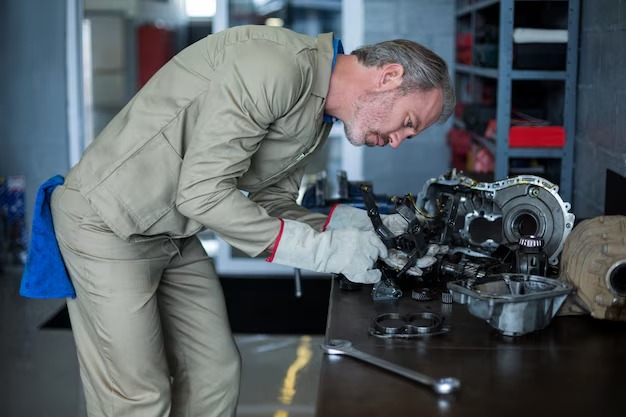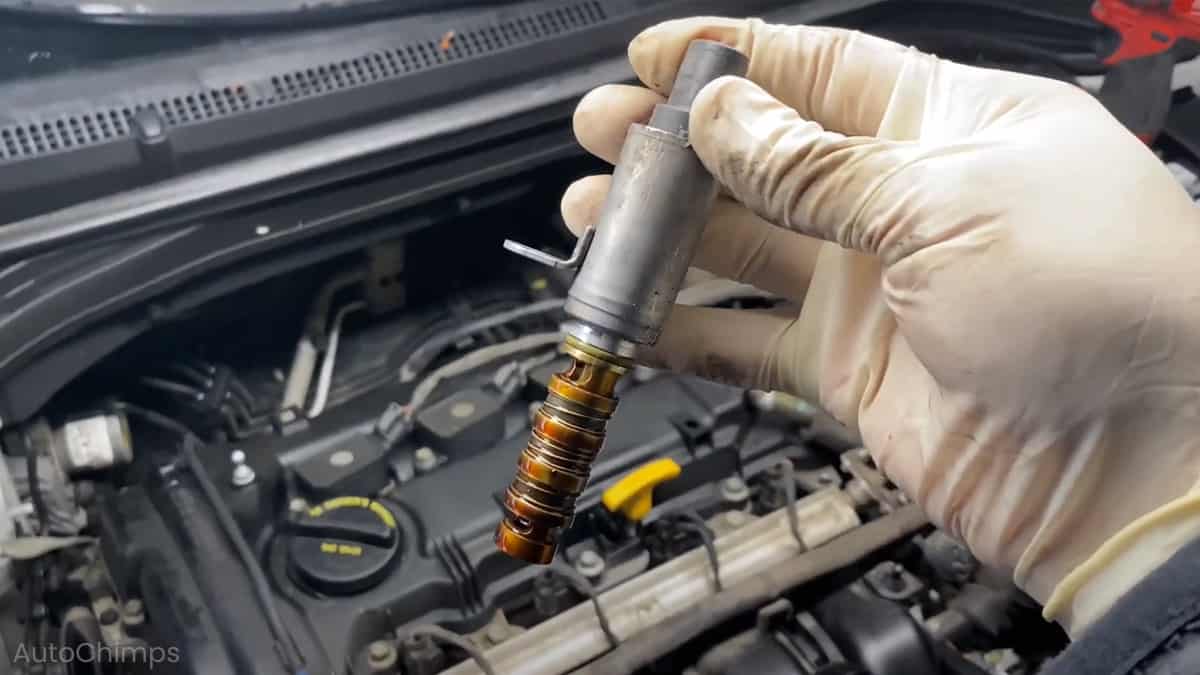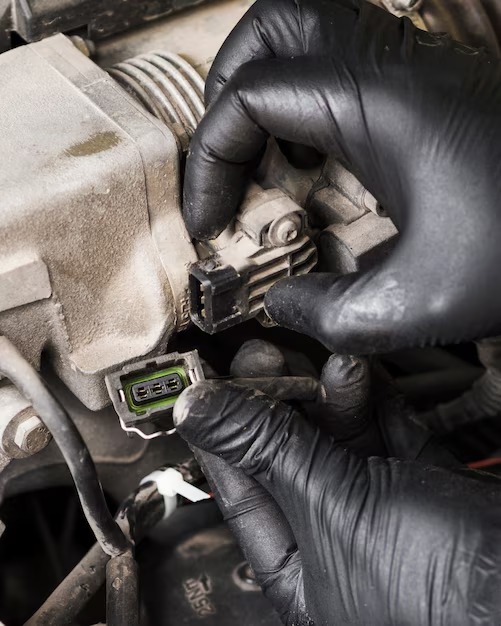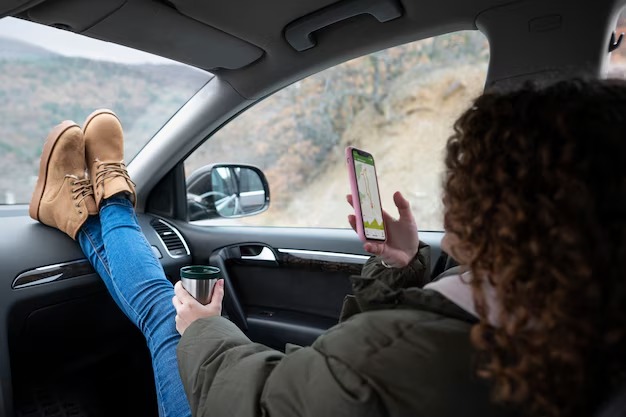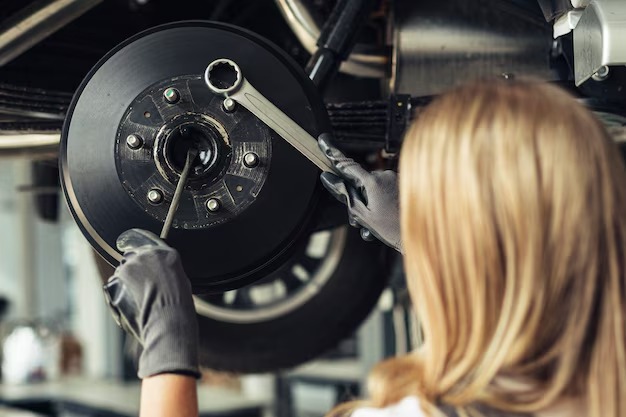How to bypass ignition switch to start car
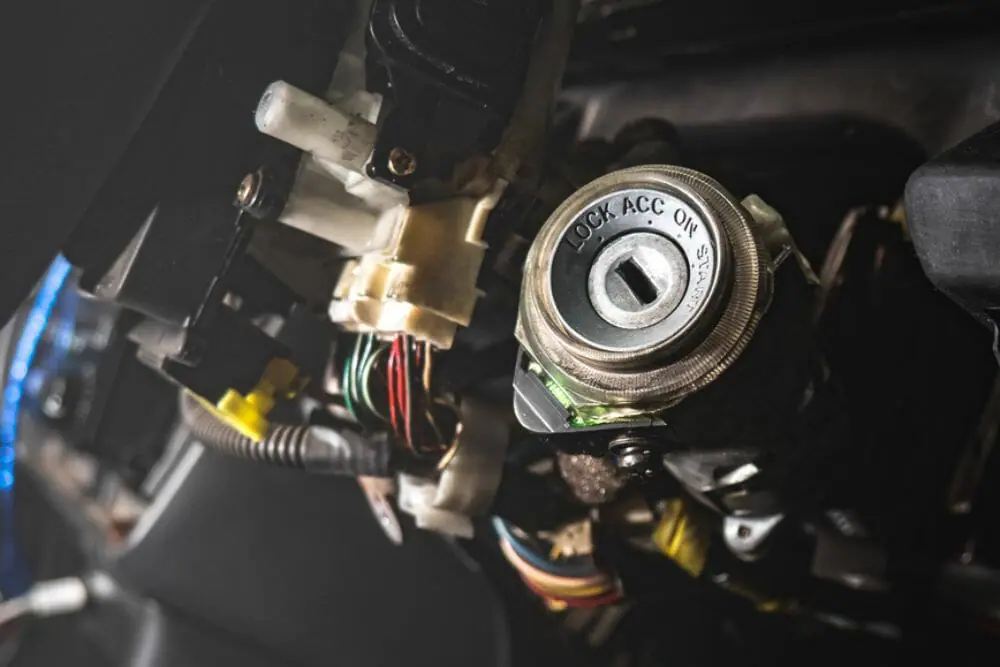
Imagine the scenario: you’re in a hurry, running late for an important meeting, and suddenly you realize that your car’s ignition switch is malfunctioning. Panic sets in as you wonder how you’ll ever start your car without it. But fear not! With a few simple steps and a little bit of ingenuity, you can get your car up and running in no time, even without an ignition switch.
First and foremost, it’s important to remember that starting a car without an ignition switch should only be done in emergencies or if you have the necessary knowledge and experience. Proceeding with caution is paramount to avoid causing any damage to your vehicle or yourself.
One method you can use to start a car without an ignition switch is by bypassing the switch itself. To do this, you’ll need to locate the wires connected to the ignition switch. Typically, these wires are located near the steering column or under the dashboard. Once you’ve located the wires, you can use a pair of wire cutters to strip the insulation off the ends, exposing the metal underneath.
Next, you’ll want to find a way to bridge the connection between the wires. This can be done by using a screwdriver or a similar object to carefully touch both ends of the stripped wires at the same time. Be sure to exercise caution when doing this, as there may be sparks. If done correctly, this should create a temporary connection and allow you to start your car’s engine. Remember, this method is not a permanent solution, and you should consult a professional mechanic to fix your ignition switch as soon as possible.
Tools and Materials Needed
Starting a car without an ignition switch may require a few tools and materials. Here is a list of what you will need:
1. Screwdriver
A screwdriver will be essential for removing the ignition switch and accessing the wiring underneath. Make sure to choose a screwdriver that fits the screws on your ignition switch securely.
2. Wirecutters or wire strippers
If you need to bypass the ignition switch and connect wires together, wirecutters or wire strippers will come in handy. These tools will allow you to cut or strip the insulation off the wires, so you can connect them properly.
3. Electrical tape
To insulate the wires and prevent them from coming into contact with each other, electrical tape is necessary. It provides insulation and ensures that the wires stay securely connected.
4. Alligator clips
Alligator clips can be useful for securely connecting the wires together. These clips have teeth that grip onto the wires, creating a secure and reliable connection.
5. Jumper cables or battery charger
If your car’s battery is dead and you need power to start the car, you will need jumper cables or a battery charger. These tools will allow you to connect your car’s battery to another power source, such as another car’s battery or a battery charger, to provide the necessary power to start the car.
With these tools and materials in hand, you will be ready to start your car without an ignition switch. However, keep in mind that starting a car without an ignition switch should only be done in emergency situations or with the proper knowledge and expertise.
Precautions to Consider
Before attempting to start a car without an ignition switch, it is important to consider certain precautions to ensure safety and protect the vehicle from any damage. These precautions include:
1. Safety Gear: Wear gloves and safety glasses to protect yourself from any potential injuries.
2. Familiarize Yourself: Take the time to familiarize yourself with the car’s wiring diagram and the specific steps required to start the car without an ignition switch.
3. Disconnect the Battery: To avoid any accidental electrical short circuits, disconnect the negative terminal of the car battery before starting the process.
4. Secure the Car: Make sure that the car is parked in a stable position and the parking brake is engaged to prevent any movement during the procedure.
5. Use Appropriate Tools: Use the proper tools, such as a screwdriver or wire cutter, to avoid any damage to the car’s wiring system.
6. Take Caution with Wires: Be extremely careful when working with electrical wires to avoid electric shocks or short circuits. Ensure that all wires are properly insulated and not frayed.
7. Practice Patience: Take your time to follow each step correctly and avoid rushing through the process. This will help prevent mistakes or accidents.
8. Consult a Professional: If you are not confident in your ability to start a car without an ignition switch, it is recommended to consult a professional mechanic who can provide guidance and assistance.
Note: It is important to remember that tampering with a car’s ignition system may void the vehicle’s warranty or violate local laws. Proceed with caution and responsibility.
Identify the Starter Solenoid
The starter solenoid is an essential component of starting a car without an ignition switch. It is responsible for engaging the starter motor, which turns the engine over and helps it start. Without the solenoid, the starter motor will not function, and the car will not start.
To identify the starter solenoid, you will need to locate the starter motor. The starter motor is typically located near the bottom of the engine, close to the transmission. Look for a cylindrical-shaped component with electrical connections attached to it. This is the starter solenoid.
When identifying the starter solenoid, you may also notice a thick cable connected to it. This cable is usually attached to the positive terminal of the car’s battery and provides power to the solenoid. It is important to take caution when handling this cable, as it carries a high amount of electrical current.
Additionally, the starter solenoid may have other small wires connected to it. These wires are responsible for sending the electrical signal from the ignition switch to the solenoid, allowing it to engage the starter motor. It is important to ensure that these wires are securely connected to the solenoid.
Overall, identifying the starter solenoid is crucial in order to start a car without an ignition switch. It is important to have a basic understanding of the various components involved in the starting process in order to troubleshoot and start the car in the absence of an ignition switch.
Locate the Battery
To start a car without an ignition switch, you’ll need to locate the vehicle’s battery. The battery is usually located in the engine compartment, although some cars may have it in the trunk or under the rear seat. Look for a black rectangular box with a red positive (+) terminal and a black negative (-) terminal.
If you’re having trouble finding the battery, consult your car’s owner’s manual for specific instructions. It’s important to locate the battery correctly to ensure you can access the necessary components for starting the car without an ignition switch.
Once you’ve located the battery, take note of its position and make sure the area around it is clear of any debris or obstructions. This will make it easier to work with the battery and minimize the risk of accidents or damage.
Find the Ignition Switch Wiring
When starting a car without an ignition switch, it is essential to locate the ignition switch wiring, which connects to the car’s electrical system.
To find the ignition switch wiring, you will need a few basic tools, including a multimeter and a wiring diagram specific to your car model. The wiring diagram can usually be found in the car’s service manual or obtained from the manufacturer’s website.
Start by disconnecting the car’s battery to ensure your safety and avoid any electrical mishaps. Once the battery is disconnected, locate the car’s fuse box and remove the fuse that controls the ignition circuit.
Using the wiring diagram as a guide, trace the wires connected to the ignition switch. The ignition switch is usually located on the steering column or dashboard, near the key cylinder. Look for a cluster of wires connected to the back of the ignition switch.
Using the multimeter’s continuity or resistance function, test each wire connected to the ignition switch to identify the live, ground, and accessory wires. The live wire is connected to the car’s power source, while the ground wire is connected to the car’s chassis. The accessory wire controls additional electrical components, such as the radio or interior lights.
Make sure to label each wire as you identify it, using masking tape or a marker, to avoid confusion later on. This step is crucial because it will help you connect the wires correctly when starting the car without an ignition switch.
Once you have identified the ignition switch wiring, you can proceed with connecting the wires to start the car without the ignition switch. It is essential to exercise caution, and if you are not comfortable with automotive electrical work, it is best to consult a professional or seek guidance from a knowledgeable individual.
Remember, starting a car without an ignition switch should only be done in emergency situations or as a temporary solution. It is always best to replace a faulty ignition switch with a new one to ensure the smooth and safe operation of your vehicle.
Splice the Ignition Switch Wiring
Splicing the ignition switch wiring is a crucial step in starting a car without an ignition switch. This process involves cutting the existing wiring and connecting it to a new switch or bypassing the switch altogether.
Gather the necessary tools and materials
Before starting the splicing process, gather the following tools and materials:
- Wire cutter/stripper
- Electrical tape
- Wire connectors
- New ignition switch (if bypassing the old one)
Identify the ignition switch wiring
Locate the ignition switch wiring under the dash or steering column. Carefully inspect the wiring harness to find the wires that are connected to the ignition switch.
| Wire Color | Function |
|---|---|
| Red | Power supply |
| Black | Ground |
| Yellow | Accessory |
| Green | Starter |
Make sure to take note of the wire colors and their corresponding functions. This information will be crucial during the splicing process.
Warning: Splicing the wrong wires can cause damage to the car’s electrical system. Double-check the wire colors and functions before proceeding.
Splice the wires
Using a wire cutter/stripper, carefully cut the wires connected to the ignition switch. Strip the ends of the wires to expose the metal conductors.
If using a new ignition switch, follow the manufacturer’s instructions to connect the new wires to the corresponding colors. Use wire connectors to secure the connections and ensure proper contact.
If bypassing the ignition switch, connect the appropriate wires together based on their functions:
| Wire Color | Function | Connection |
|---|---|---|
| Red | Power supply | Connect to constant power source |
| Black | Ground | Connect to vehicle chassis or ground point |
| Yellow | Accessory | Connect to accessory power source |
| Green | Starter | Connect to starter motor |
Once all the connections are made, use electrical tape to insulate and protect the exposed wires. This will prevent any short circuits or electrical hazards.
Note: It is important to have a good understanding of car wiring or seek professional help to ensure proper and safe splicing of the ignition switch wiring.
Connect the Battery Terminal
Before starting a car without an ignition switch, you need to connect the battery terminal. This step is crucial as it will supply power to the necessary systems in the vehicle.
Make sure the car is turned off and the key is removed from the ignition. Locate the battery, usually found in the engine compartment. The battery is a rectangular-shaped box with two terminals: a red positive terminal and a black negative terminal.
Step 1: Safety first
Before connecting the battery terminal, it is important to prioritize safety. Wear protective gloves and safety glasses to protect yourself from any potential harm.
Step 2: Connect the positive terminal
Start by connecting the red positive terminal. Take the positive cable, usually red, and attach it to the positive terminal of the battery. Ensure it is securely connected and tight by tightening the clamp or using a wrench.
Step 3: Connect the negative terminal
Next, connect the black negative terminal. Grab the negative cable, usually black, and attach it to the negative terminal of the battery. Again, make sure it is securely connected and tight.
Once both terminals are connected, you can proceed to start the car without an ignition switch. However, keep in mind that this is a temporary solution and it is recommended to fix or replace the ignition switch as soon as possible.
Test the Car’s Starting System
Before attempting to start a car without an ignition switch, it is important to ensure that the car’s starting system is in good working condition. This will help to prevent any potential damage to the car or injury to yourself.
1. Check the Battery
Start by checking the battery to make sure it has enough charge to start the car. You can do this by turning on the headlights and seeing if they are dim or flickering. If this is the case, the battery may be weak and in need of charging or replacing.
If the battery is fully charged, check the battery terminals for any corrosion. Use a wire brush to clean off any build-up and make sure the terminals are securely tightened.
2. Inspect the Starter Motor
The starter motor is responsible for turning the engine over when you start the car. Inspect the starter motor for any visible damage or loose wires. If you notice any issues, it may be necessary to replace the starter motor.
You can also test the starter motor using a multimeter. Disconnect the wires from the starter motor and connect the multimeter to the terminals. Set the multimeter to the resistance setting and check for a reading of zero or close to zero. If the reading is significantly higher, it may indicate a faulty starter motor.
Note: Testing the starter motor can be dangerous, as it involves working with electrical components. If you are not familiar with car mechanics, it is recommended to seek professional help.
3. Verify the Ignition Switch or Solenoid
The ignition switch or solenoid is another component that can cause issues with starting the car. Inspect the ignition switch for any signs of damage or loose connections. If necessary, it may be necessary to replace the ignition switch or solenoid.
You can also test the functionality of the ignition switch or solenoid by using a test light or multimeter. Consult your car’s repair manual for the specific testing procedures and follow them carefully.
By testing the car’s starting system, you can identify any potential issues before attempting to start the car without an ignition switch. This will help to ensure a safer and more successful start.
Question-Answer:, How to bypass ignition switch to start car
What should I do if my car’s ignition switch is broken?
If your car’s ignition switch is broken, there are a few possible solutions. One option is to replace the ignition switch entirely. Another option is to bypass the ignition switch and start the car using a push-button start system. Alternatively, you could hire a professional locksmith or mechanic to fix the ignition switch for you.
Can I start my car without the ignition switch?
Yes, it is possible to start a car without an ignition switch. One way to do this is by hot-wiring the car. This involves connecting certain wires together to bypass the ignition switch and start the car. However, it is important to note that hot-wiring a car is illegal in many places and should only be done in emergency situations or by professionals.
Is it dangerous to start a car without an ignition switch?
Starting a car without an ignition switch can be dangerous if not done properly. Hot-wiring a car, for example, can result in damage to the electrical system and may even cause a fire. Additionally, bypassing the ignition switch can make it easier for thieves to steal the car. It is always best to consult a professional locksmith or mechanic before attempting to start a car without an ignition switch.
How much does it cost to replace an ignition switch?
The cost of replacing an ignition switch can vary depending on the make and model of the car, as well as the labor rates in your area. On average, you can expect to pay anywhere from $200 to $500 for parts and labor. However, it is always a good idea to get a few quotes from different mechanics to ensure you are getting a fair price.


